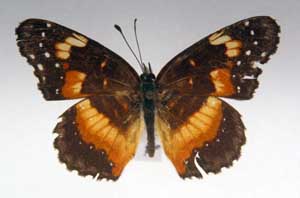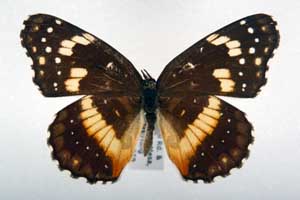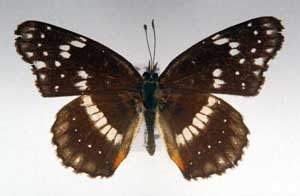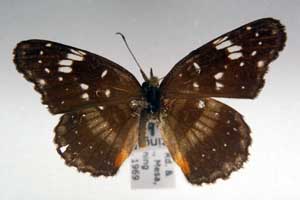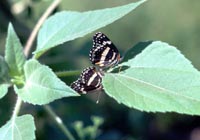
A male and female (not of
gender
choice) in the process of making an
evolutionary contribution to the next
generation

Laying an egg cluster underneath a wild
sunflower leaf (Heliathus annuus)
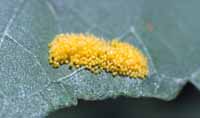
Egg Cluster. Females have high
fertility. One hand paired female laid
seven egg clusters that produced a
total of 1,169 larvae.
Home Page
|

Newly emerged first instar
larvae
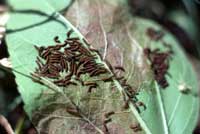
Gregarious behavior. Third instar larvae
nearing a molt to the 4th
instar. Larvae
are gregarious through the 4th
instar, but
disperse in the 5th, the last,
instar, Note
the crab spider to the right
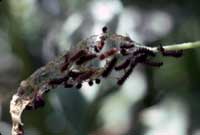
Larvae in the process of molting.
Newly molted larvae can be identified
by their light colored scoli
|
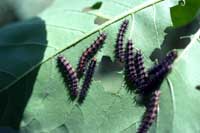
The nigra larval phenotype. The larvae
are all black with variable numbers of
small white dots. One bicolor is in the
image. It is identified by having a mid-
dorsal orange band, or an orange
splotch surrounding the mid-dorsal
scoli
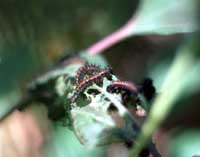
The bicolor larval
phenotype. The
image has two bicolor and what looks
to be a 3rd instar rufa
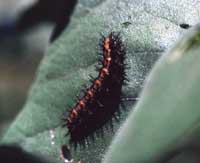
A bicolor in the last,
the 5th, instar
|
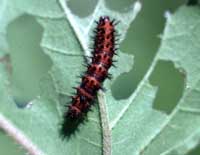
The rufa larval
phenotype. There are
variable amounts of melanism. Some
rufa in early instars have so much
melanism that they could be mis-
identified as being a bicolor. However,
at the fifth instar the melanic areas
are
much reduced and the larvae are easily
identified as being a rufa

Four rufa
and four bicolor

This exhibits some of the
melanic
variation of the pupae. There also
exists a polymorphism of the non-
melanic background coloration being
either a creamy white or a light yellow
|
